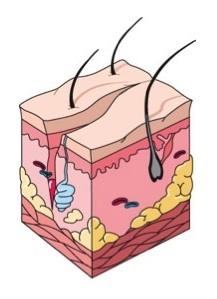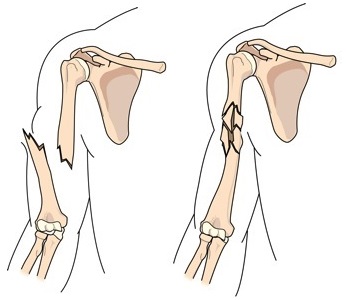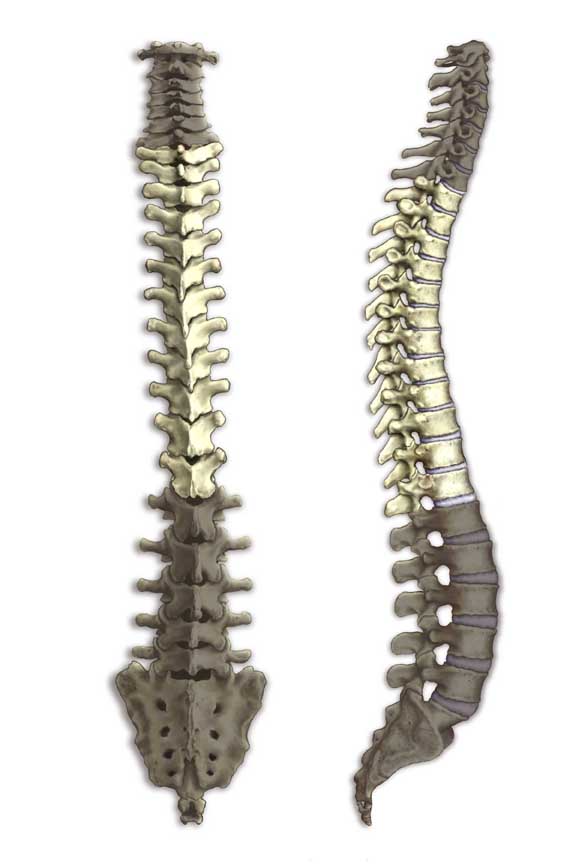Treatments for Bites & Stings are: to administer auto injection, if necessary, and to perform CPR.
Burns vary on the degree of which the patient has been burned. Remember, there are 3 categories—1st-degree, 2nd-degree and 3rd-degree.
Treatment: Keep the burn cool. Treat the burn with an ointment. Wrap the burn to avoid infection. Do the same with a 2nd degree burn. If it’s a 3rd degree burn: Do NOT take materials off the patient. Call 911 or rush to the hospital immediately. Raise the burned body parts above the heart to raise the blood pressure and ease the pain. Cover the burns with a moist cloth.
Treatment for Bruises: Apply an ice pack or cold cloth. If necessary, have the patient take a pain-reliever. If the bruise is on the head consider taking the patient to a hospital or to see a doctor for a concussion.
If a patient undergoes Cardiac Arrest perform CPR and/or use an AED and call 911, immediately.
Choking - The universal sign for choking is placing both hands around your neck. For Infants:Apply 5 thumps to infant’s back and 2-finger compression upon the chest and repeat, until the object is dislodged. For Children and Adults: perform the Heimlich maneuver (5 quick thrusts). For an Unconscious person: lay the him/her on their back, on the ground and perform CPR—not forgetting to clear the airway and to call 911.
Treatment for Cuts & Scrapes: stop the bleeding. Clean the wound thoroughly. Apply an ointment. Wrap the wound to avoid infection. If the wound is deeper than a ¼ inch seek medical attention. Have the patient get a tetanus shot or a booster shot.
Treatment for Drug Overdoses: call 911 immediately or take the patient to the nearest hospital. Check for Shock symptoms, monitor vital signs and document all drugs taken and keep the container and/or label.
If Electroshock's are sustained longer than a few seconds, its most likely the patient will be severely burned. Call 911 immediately and if the patient is showing signs of weakness you might have to perform CPR. Do NOT touch the patient until the electrical current is clear. Use non-conductive materials to either turn off the electrical current or move the patient away from the electrical current. To relieve the pain of the shock you can raise the patient’s part of the body, that was electrocuted, higher than the patient’s heart. If the patient is non-responsive make sure to perform CPR.
There are 3 different kinds of Eye Injuries—a Black Eye, a Foreign Object caught in the eye and a Chemical Splash in the eye. Make sure to flush the eye, use eye solution, if necessary. Have the patient rinse his/her eye under lukewarm water, and if necessary, bring the patient to the hospital with the container and/or the label.
A Fracture can be very serious. If the bone is broken at the neck, head, or back, if the joint is deformed, if there’s heavy bleeding, or any abnormalities, make sure to call 911 immediately. If the patient is unconscious or is pulse-less call 911 and perform CPR.
Head Injuries. If the patient is at all acting strange such as: slurring or is showing any signs of confusion, etc… make sure to call 911 immediately. Do NOT move the patient and do NOT apply any pressure upon any wounds. If the patient is non-responsive perform CPR.
When treating a patient who has had a Heart Attack make sure to call 911 immediately. If possible, rush the patient to the hospital, have the patient chew aspirin (unless allergic or told otherwise) and perform CPR, if necessary.
Hemorrhages there are 4 classes. Treatment: wrap the hemorrhage, call 911 or bring patient to the hospital.
Treatments for Hypothermia consist of keeping the patient warm, using, a warm dry compressor, changing the patient’s wet clothing or materials, call 911 and/or bring the patient to the nearest hospital. If the patient is non-responsive or unconscious, perform CPR.
Nosebleeds are very common. If the nosebleed results from a serious accident, make sure to call 911. If the patient falls unconscious or is non-responsive make sure to perform CPR.
If a patient is ever Poisoned call 911, the National Capital Poison Center and/or bring the patient to the nearest hospital. Make sure to have the patient step outside for fresh air, flush the patient’s eyes and mouth and/or have the patient wash his/her skin. Make sure to bring the container or pills with label to the hospital.
Punctured Wounds - If the patient falls unconscious or is non-responsive make sure to call 911 and perform CPR. Make sure to stop the bleeding. Make sure to clean the wound thoroughly and apply an ointment such as: Neosporin. If needed, have the patient take a pain-reliever. If there's an infection or if the wound doesn’t heal within 2 weeks make sure the patient visits a hospital or sees a doctor.
Respiratory Arrest is the cessation of oxygenated blood throughout the body. CPR might need to be performed, call 911 immediately or bring the patient to the nearest hospital.
When dealing with Seizures make sure to stay clear of the patient (unless the patient is going to get hurt or hurt someone else), call 911 immediately and make sure not to restrain the patient.
When dealing with Shock make sure to raise the patient’s legs above the heart, put the patient on his/her side for prevention of choking and perform CPR, if needed.
When dealing with a Spinal Injury make sure to call 911, immediately. Make sure not to move the patient unless it's necessary and only with 2 rescuers. If needed, perform CPR only using the jaw-thrust maneuver.
When dealing with Sprains & Strains make sure to wrap the injury, use an ice pack or cold cloth to keep the injury from swelling and use bandages for sprains or a brace.
Strokes are ruptured/blocked blood vessels in the brain. Strokes are the loss of oxygen to the brain which causes rapid deterioration. Perform CPR if needed, call 911 and/or bring the patient to the nearest hospital.
Congratulations! You've just finished the Course. Now you can take the Exam.








